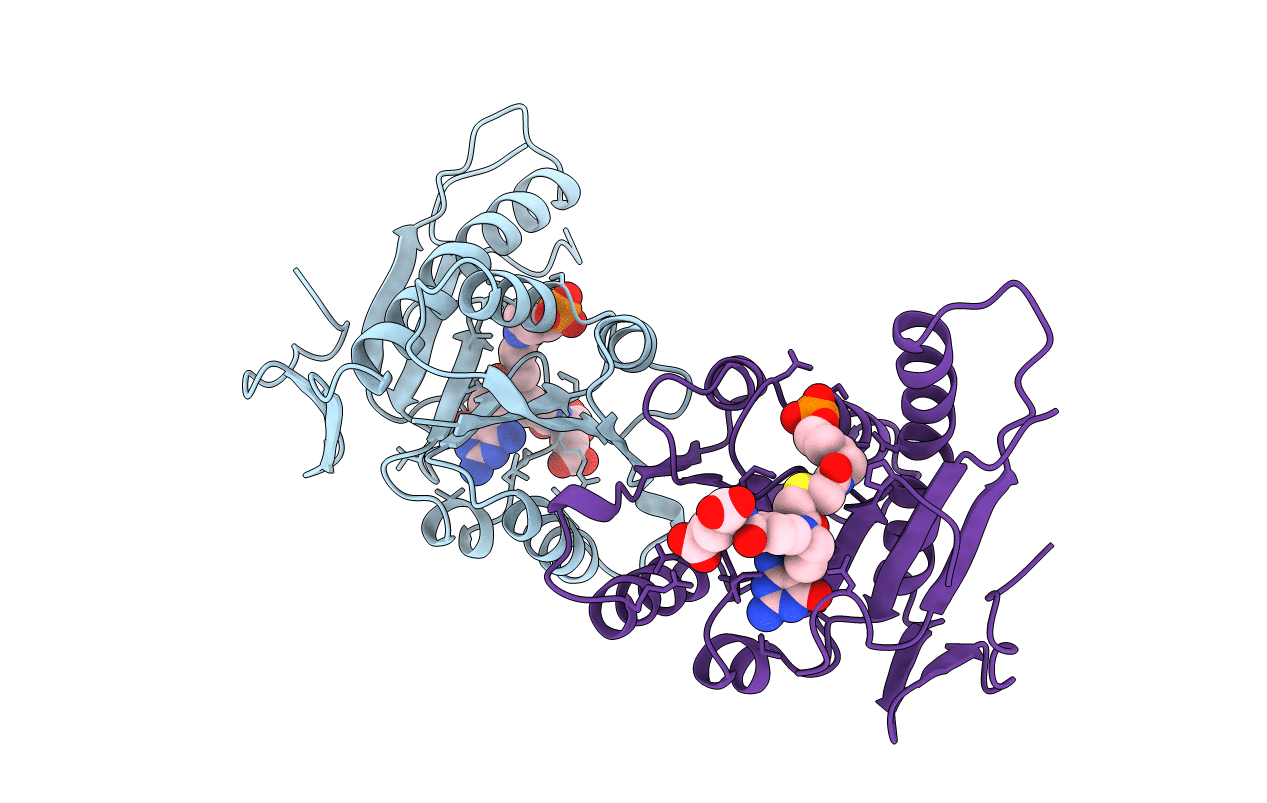
Deposition Date
1994-12-08
Release Date
1995-07-10
Last Version Date
2024-02-07
Entry Detail
PDB ID:
1GAR
Keywords:
Title:
TOWARDS STRUCTURE-BASED DRUG DESIGN: CRYSTAL STRUCTURE OF A MULTISUBSTRATE ADDUCT COMPLEX OF GLYCINAMIDE RIBONUCLEOTIDE TRANSFORMYLASE AT 1.96 ANGSTROMS RESOLUTION
Biological Source:
Source Organism:
Escherichia coli (Taxon ID: 562)
Method Details:
Experimental Method:
Resolution:
1.96 Å
R-Value Free:
0.29
R-Value Work:
0.16
R-Value Observed:
0.16
Space Group:
P 1 21 1


